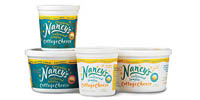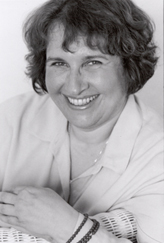 Ever since my darling stomach lining (DSL) was pronounced “inflamed” by my doctor, I’ve been a culture vulture, by which I mean a fan of “live-culture” or “living” foods. Yogurt is the best recognized substance of this nature. But to the list you may add miso, sourdough bread, sauerkraut, kimchi, tempeh, and kombucha tea. This morning, I ate a big serving of Nancy’s Organic Cultured Lowfat Cottage Cheese (which tastes like buttermilk). Turns out, all of us should regularly ingest fermented foodstuffs. Erp.
Ever since my darling stomach lining (DSL) was pronounced “inflamed” by my doctor, I’ve been a culture vulture, by which I mean a fan of “live-culture” or “living” foods. Yogurt is the best recognized substance of this nature. But to the list you may add miso, sourdough bread, sauerkraut, kimchi, tempeh, and kombucha tea. This morning, I ate a big serving of Nancy’s Organic Cultured Lowfat Cottage Cheese (which tastes like buttermilk). Turns out, all of us should regularly ingest fermented foodstuffs. Erp.
Every one of the 14 days I was on antibiotics, I drank a little vial of a live-culture probiotic drink new to the market called Bio-K Plus. I’m going to stay on that for awhile. Dannon also makes a less expensive probiotic beverage called Activia, which you can find at most grocery stores. Doctors don’t always tell you to replace the L. acidophilus and B. bifidum killed off by antibiotics (it slips their busy minds, I guess), but this is an important practice. And now, with the help of a great book called “Wild Fermentation: The Flavor, Nutrition, and Craft of Life-Culture Foods” by Sandor Ellix Katz (who claims fermented foods improved his health after an HIV diagnosis), I’m venturing deeper into this whole terrain, and have decided to stick with live cultures in my diet…well, forever. This is for keeps. While I don’t expect to start filling the house with the fat vats and crocks you’d find in Katz’s kitchen, I’ll buy as much live food as I can and stay open to experiment. In the book, you’ll find all kinds of recipes for safely creating healthy fermented foods at home.
“Your body is an ecosystem that can function most effectively when populated by diverse species of microorganisms,” Katz writes. “By fermenting foods and drinks with wild microorganisms present in your home environment, you become more interconnected with the life forces of the world around you. Your environment becomes you, as you invite the microbial populations you share the earth with to enter your diet and your intestinal ecology.”
I’ll keep you posted on my own discoveries. To learn more, visit the Wild Fementation website.

